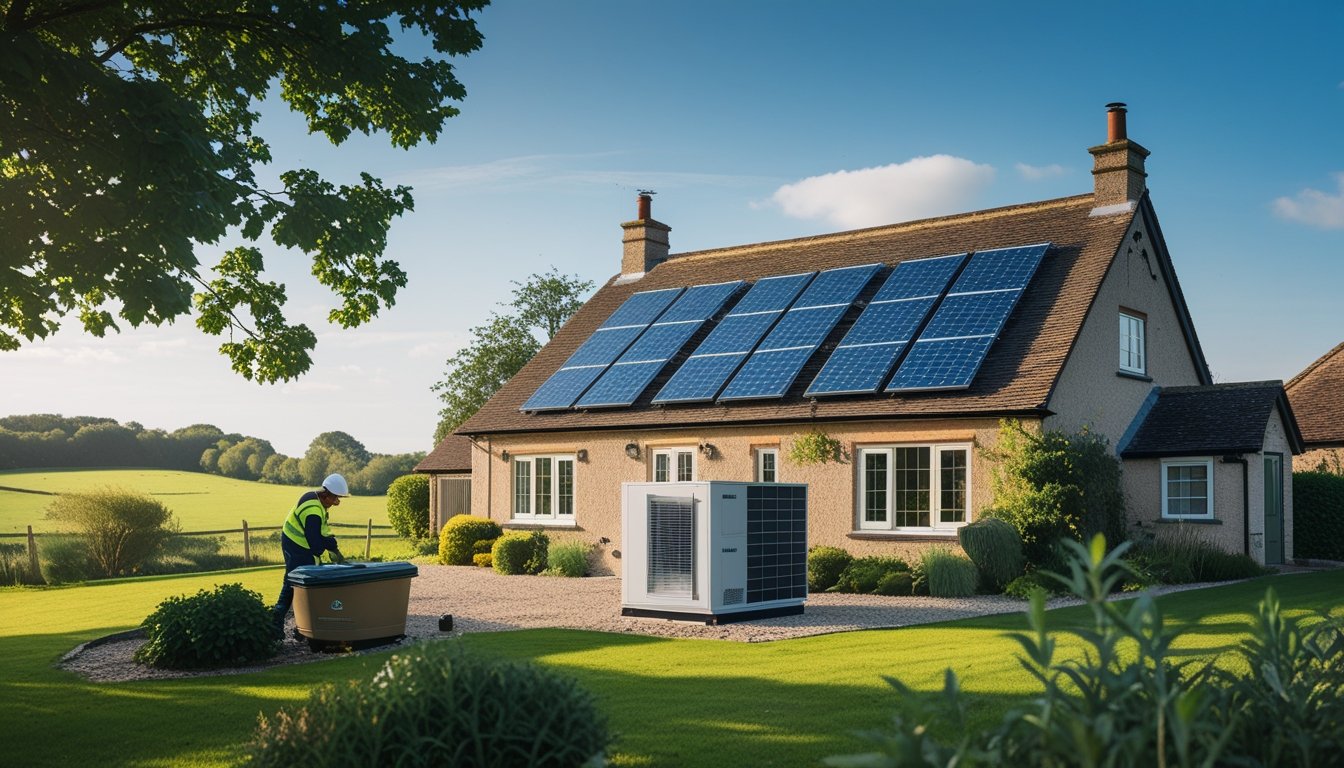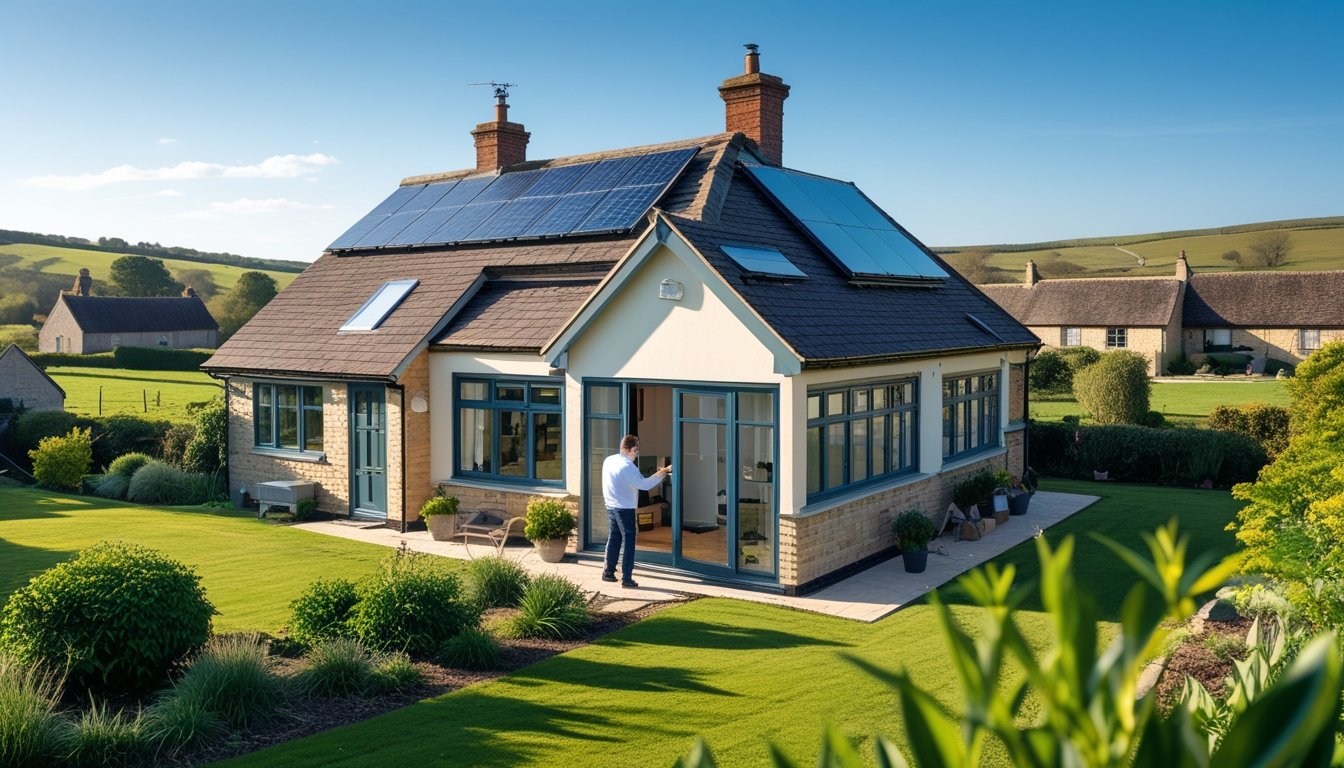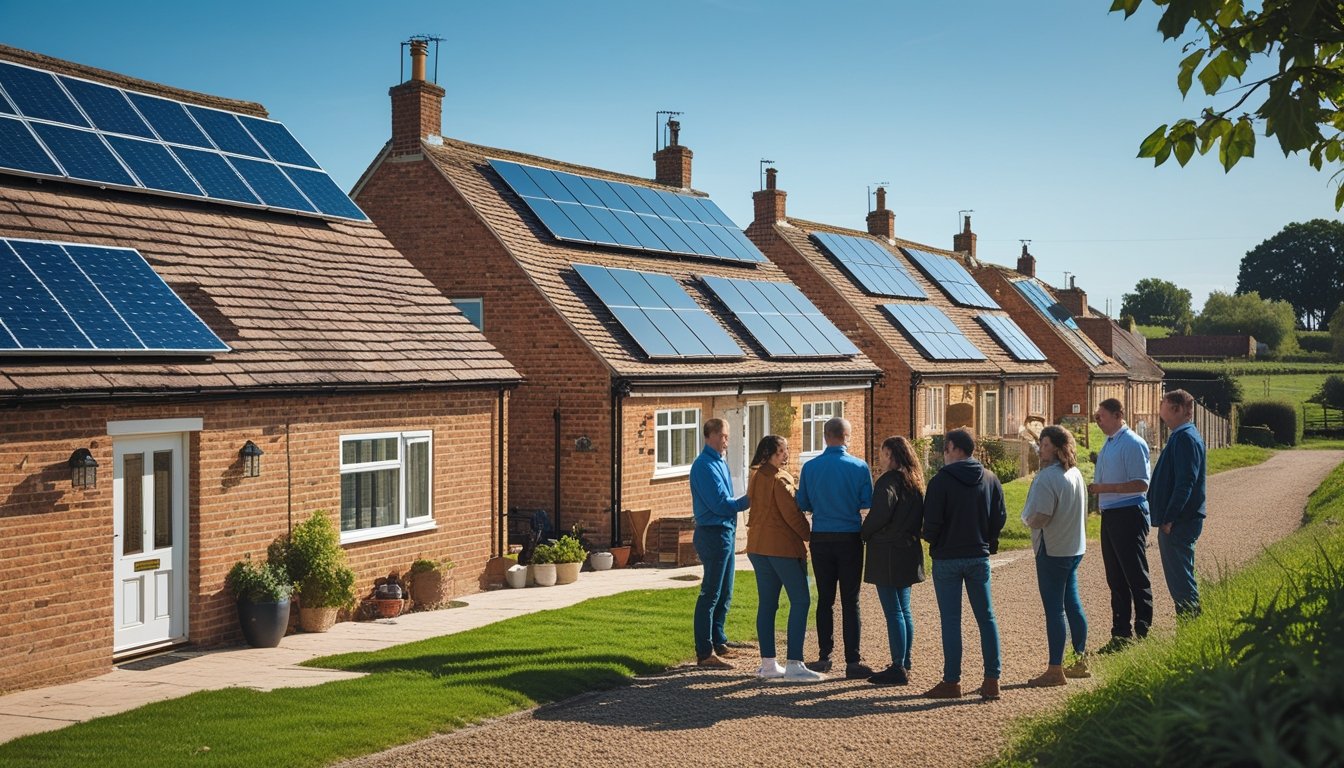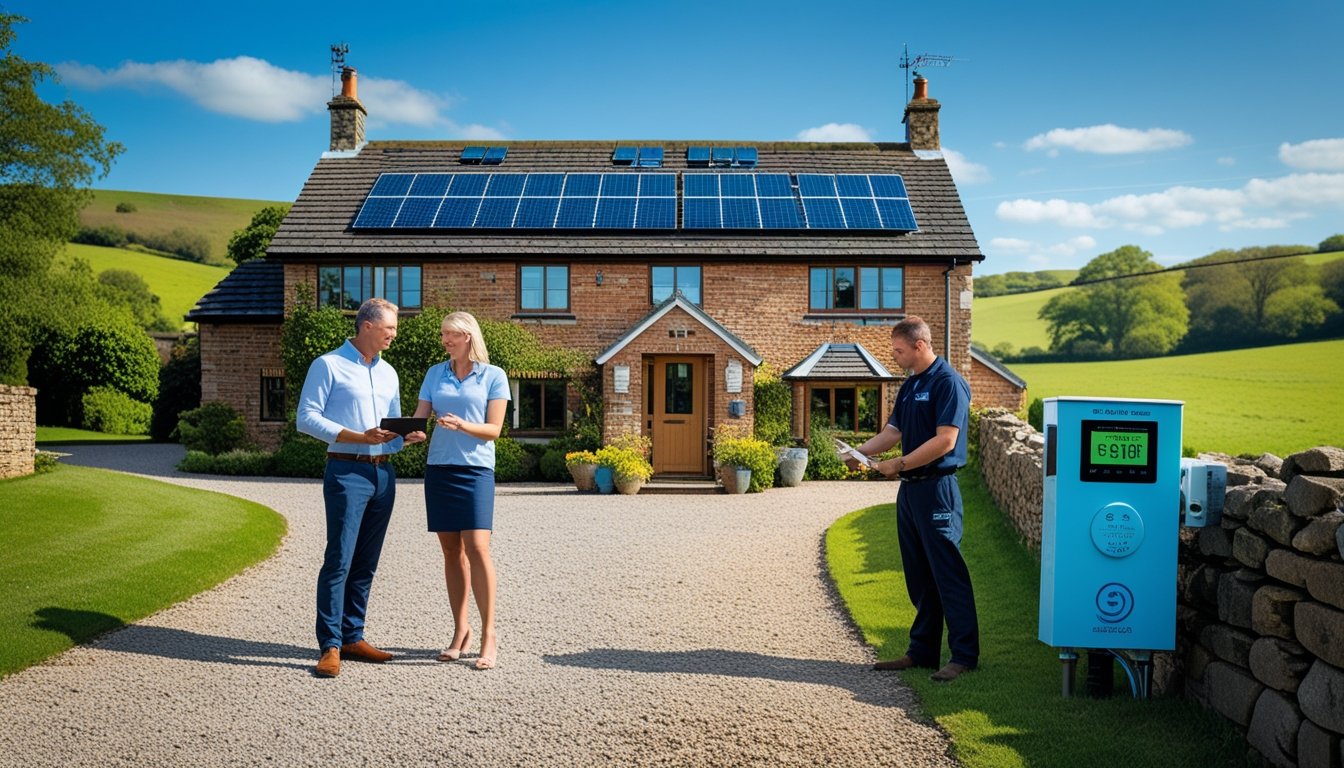Late updated: 21 Jul 2025 09:07
Written by: Oliver Bennett
Improving Energy Efficiency In UK Rural Homes: Practical Strategies for Cost Savings
Improving energy efficiency in rural UK's homes is not just a beneficial choice—it's a necessity. The right strategies can help reduce energy bills, minimise carbon footprints, and enhance overall living conditions. Installing insulation in lofts, draught-proofing, and shifting to energy-efficient light bulbs are simple yet effective ways to cut down energy consumption.

We often hear from homeowners in rural areas facing unique challenges compared to those in urban regions. Geographical isolation, older housing stock, and limited access to services can present significant barriers. Even with these challenges, adopting cost-effective measures like maintaining efficient heating systems can significantly mitigate energy inefficiencies.
Another key aspect involves understanding the available resources and funding options for retrofitting homes. It's important for communities to access relevant information and incentives to support sustainable changes. By overcoming these obstacles, we can contribute to a greener future for rural areas.
Key Takeaways
- Cost-effective tactics boost energy efficiency in UK rural homes.
- Rural areas face unique barriers but viable solutions exist.
- Access to resources is crucial for sustainable change.
Essential Strategies for Improving Energy Efficiency in UK Rural Homes

Addressing energy efficiency in rural UK homes requires tailored strategies that consider unique challenges such as older building stock and limited access to the gas grid. By focusing on assessing current energy performance, improving insulation and building fabric, and integrating renewable and low-carbon heating solutions, we can significantly reduce carbon emissions and improve overall efficiency.
Assessing Baseline Energy Performance
Before implementing energy efficiency measures, it's crucial for us to thoroughly assess the current energy performance of rural homes. A good starting point is obtaining an Energy Performance Certificate (EPC), which provides a detailed evaluation of a property's energy use and potential improvements.
With this baseline, we can identify specific areas where interventions are most needed. Understanding heat loss through walls, floors, and roofs can inform our decisions on necessary upgrades. Regular energy audits can further help in spotting inefficiencies.
Identifying high-impact areas ensures that resources are allocated effectively, yielding substantial energy efficiency improvements. Furthermore, this foundational step allows us to track the success of implemented changes over time, giving a measurable impact of any measures taken.
Upgrading Building Fabric and Insulation
Improving the building fabric of rural homes immensely contributes to energy efficiency. Rural housing often includes older buildings with outdated insulation, leading to considerable energy loss. By upgrading loft and wall insulation, we can notably reduce heating demands.
Double or triple glazing windows can offer significant improvements in reducing heat loss. Draught-proofing measures such as sealing gaps around doors and floors help retain warmth. Materials like eco-friendly insulation boards provide an efficient and sustainable upgrade option.
While these measures might require an initial investment, the long-term reduction in energy bills makes them worthwhile. Enhanced insulation not only improves comfort but also lowers the carbon footprint, crucial for sustainable living.
Implementing Renewable and Low-Carbon Heating Solutions
Transitioning to renewable and low-carbon heating solutions is vital for rural energy efficiency enhancements. Homes primarily reliant on traditional heating can consider alternatives like heat pumps, which are energy-efficient and reduce carbon emissions.
Biomass boilers can be an effective solution for rural settings, utilising locally sourced materials. Solar thermal systems provide an additional renewable option, especially for water heating.
Incentives and grants are sometimes available, easing the transition to greener technologies. By investing in these solutions, rural homes can achieve substantial energy savings while aligning with environmental targets. Adopting these technologies places us at the forefront of energy efficiency improvements.
Overcoming Common Challenges and Driving Change in Rural Areas

Rural areas in the UK face unique challenges in improving energy efficiency, ranging from economic constraints to lack of awareness. By addressing these key issues, we can reduce energy bills, alleviate fuel poverty, and foster a more sustainable future.
Addressing Fuel Poverty and Reducing Energy Bills
Fuel poverty is a pressing concern for many rural households. These areas often suffer from inefficient housing stock and higher energy costs due to reliance on older heating systems. To tackle this, targeted interventions are necessary. Insulation improvements and modern heating solutions can drastically reduce energy consumption. Government-backed programmes, such as the Energy Company Obligation (ECO), provide funding for home upgrades, helping lower costs. We must ensure these initiatives reach those most in need, reducing their financial burden and improving their quality of life.
Navigating Policy, Funding, and Support
Effective policy and funding are crucial. Many rural residents encounter barriers such as complex application processes or limited local resources. It's essential that policymakers streamline funding access and bolster support structures. Rural home improvement grants can drive meaningful change by providing financial incentives for energy efficiency upgrades. Partnerships with local councils and energy providers can expand the scope of available support, ensuring that rural areas receive equitable attention. Our focus should aim to simplify the obstacles standing in residents' paths and enhance access to crucial aid.
Enhancing Public Awareness and Engagement
Awareness is key to driving energy efficiency improvements. Many rural residents may not be aware of the benefits of energy-efficient practices or available aid schemes. Educational campaigns and community workshops can significantly enhance engagement and inform homeowners about cost-saving measures. Employing local champions can also motivate change, as they understand the unique challenges of their communities. By fostering active participation, we enable residents to make informed decisions and embrace new technologies, ultimately improving their homes' efficiency and their quality of life.
Frequently Asked Questions

In rural UK homes, energy efficiency improvements can greatly reduce utility costs and environmental impacts. There are various grants and financial schemes available to homeowners, including those for solar panel installations and energy performance enhancements.
What types of grants are available for improving energy efficiency in rural UK homes?
Homeowners may access grants such as the Green Homes Grant, which offers funding for improvements like insulation or heating systems. Checking with local councils for specific rural grants can also be beneficial in enhancing energy efficiency.
How can homeowners in rural areas access the Warm Home Discount scheme?
The Warm Home Discount scheme provides eligible homeowners with discounts on their electricity bills during winter. Applying through participating energy suppliers and checking eligibility criteria online ensures access to these valuable savings.
What options exist for funding solar panel installations in rural properties across the UK?
Several options exist for financing solar panels, including government incentives like the Smart Export Guarantee. Additionally, some local authorities offer specific grants or low-interest loans to rural homeowners looking to invest in solar energy.
Can residents of rural homes use the EPC calculator to improve their energy efficiency ratings?
Yes, using the EPC calculator helps residents identify weaknesses in their properties' energy performance. By understanding these areas, homeowners can make targeted improvements to enhance their Energy Performance Certificate ratings.
What energy-saving schemes are specifically tailored for UK rural homeowners?
Schemes like the Rural Community Energy Fund provide tailored solutions for energy efficiency in rural areas. These initiatives support community-led renewable energy projects, offering both financial and advisory assistance to rural homeowners.
How can green loans be utilised for home improvements aimed at energy efficiency in the countryside?
Green loans present an effective way to fund home improvements with a focus on energy efficiency. Banks and financial institutions offer these loans with favourable terms, enabling rural homeowners to invest in sustainable upgrades such as better insulation or energy-efficient heating systems.
